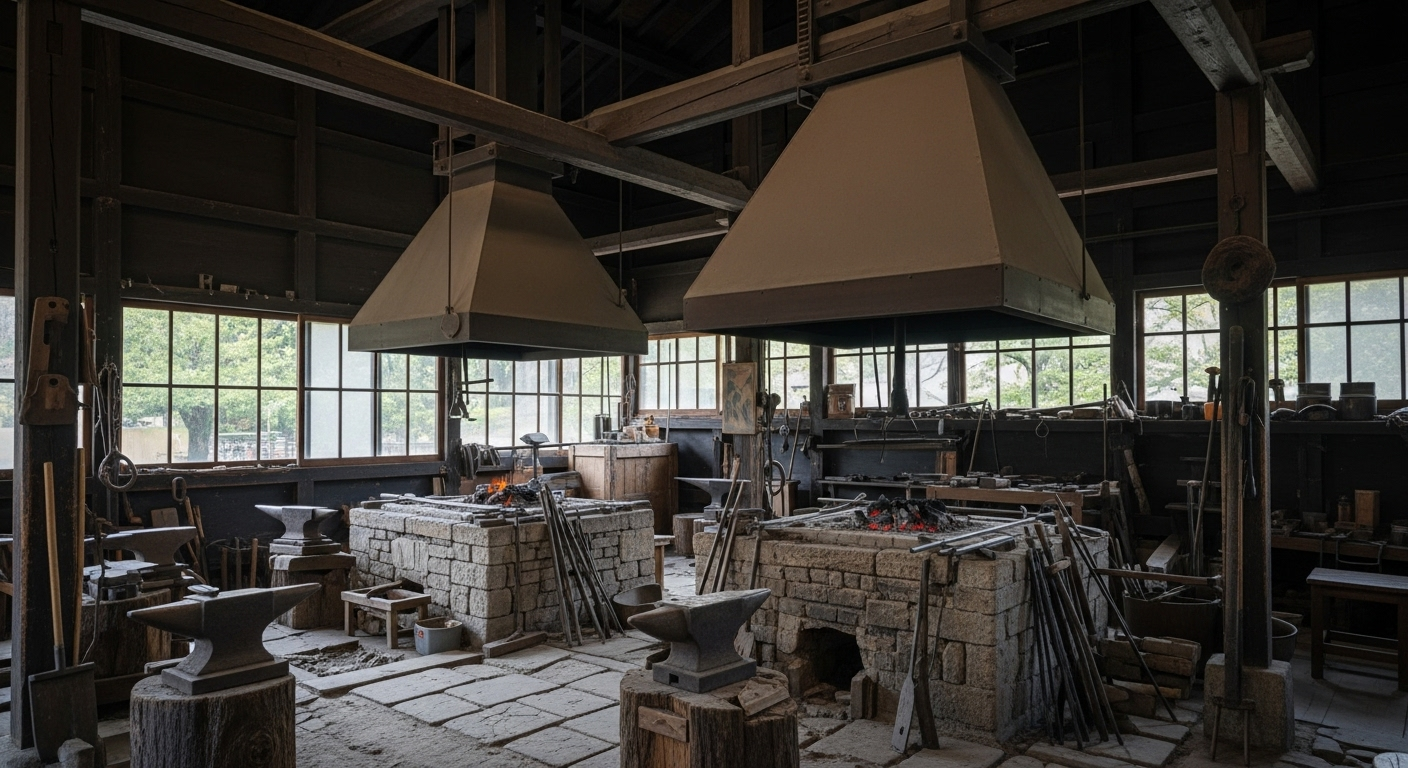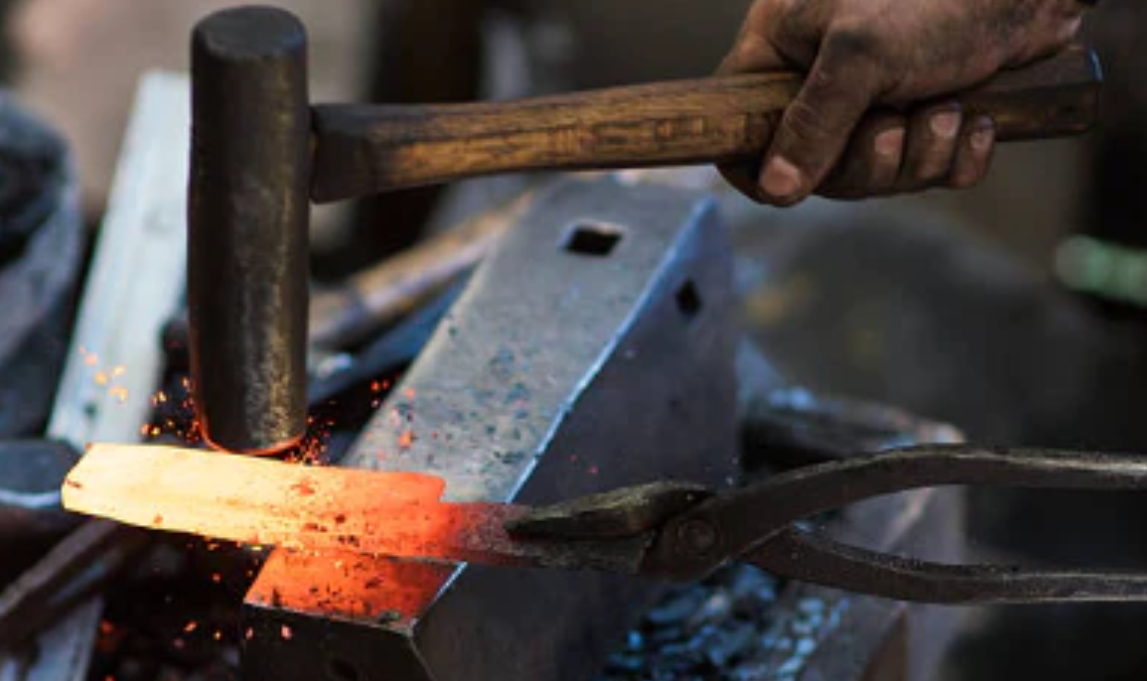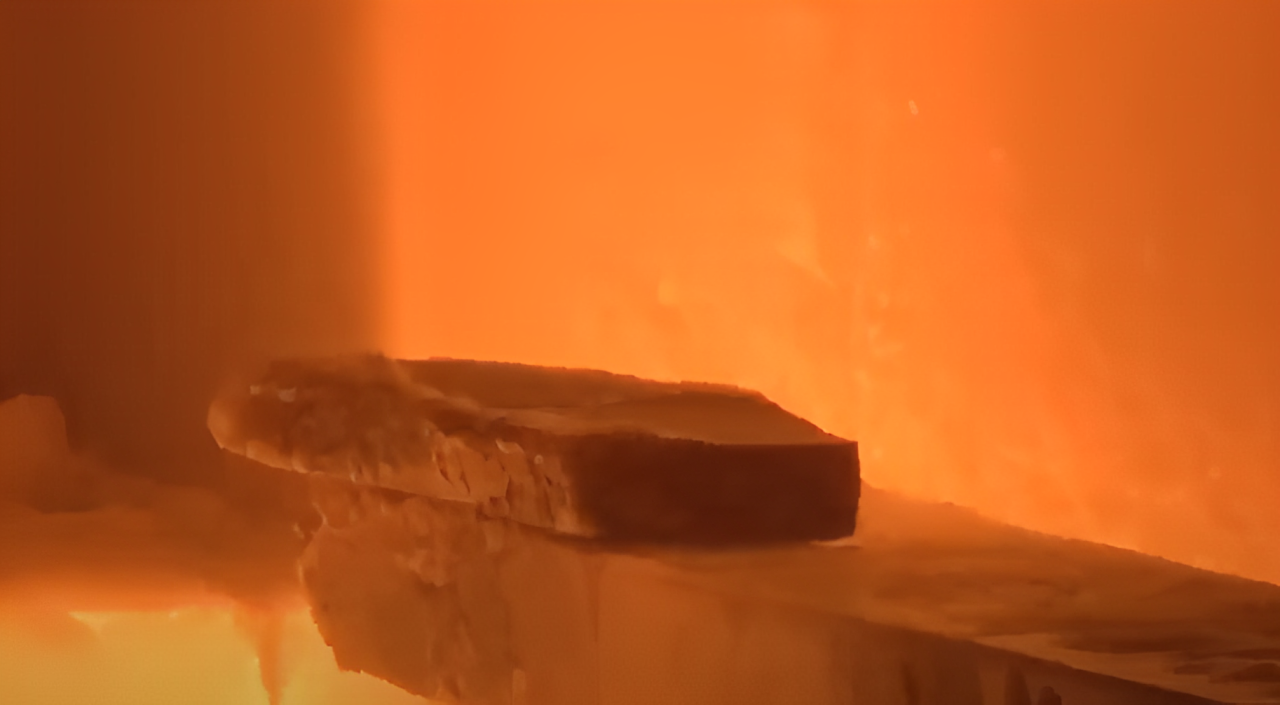
Types of Knives
-
From sashimi to vegetables, from fish to meat — every Japanese knife has a purpose.
Each blade is shaped by centuries of tradition, honed for precision, and forged in respect for its ingredients.
But why so many?
Behind the variety lies a philosophy that turns the simple act of cutting into a form of art. -

Yanagiba
A traditional Japanese sashimi knife with a long, slender blade, designed for smooth single-stroke slicing. It preserves the delicate texture and natural flavor of raw fish, making it essential for authentic sashimi preparation.

Yanagiba (Sakimaru)
A sashimi knife with a graceful curved tip, combining elegance and precision. Originating in Kansai, its katana-like profile is valued for both performance and presentation, enhancing the visual artistry of sashimi preparation.

Yanagiba (Kiritsuke)
A hybrid knife blending sashimi precision with Kiritsuke versatility. Its wider, thicker blade handles sashimi slicing and various kitchen tasks, appealing to chefs who want both elegance and multi-functionality in one blade.

Deba
A single-bevel knife for filleting fish. With a thick spine, broad blade, and substantial weight, it cuts cleanly through bones while protecting delicate flesh, making it indispensable in traditional Japanese cuisine.

Usuba
A single-bevel knife for vegetables, available in styles like Kanto, Kansai Kamausuba, and Mukimono. It delivers precise cutting, peeling, and decorative work, making it a key tool in professional Japanese kitchens.

Gyuto
Japan’s take on the Western chef’s knife—lighter, thinner, and crafted for precision. Ideal for slicing meat, chopping vegetables, and preparing sashimi, it offers unmatched versatility for professional and home cooks.

Petty Knife
A compact, versatile knife for everyday tasks, from peeling fruit to trimming meat and fish. Made with the same care as larger knives, it offers precision, comfort, and beauty in a nimble form.

Garasaki
A knife designed for breaking down bone-in poultry and pork. With a thick heel for stability, a pointed tip for precision, and a rigid blade, it excels at joint separation and clean meat removal.

Other Types
Includes Santoku for all-purpose use, Takohiki for clean sashimi cuts, and Fuguhiki for ultra-thin fugu slices—each reflecting Japan’s dedication to craftsmanship and flavor.
Main Type of Japanese Knife
-
Video Provided: YouTube Sabakeru Channel (part of the Nippon Foundation's "The Ocean and Japan Project")
-
Why Are There So Many Types of Japanese Knives?
-
Because in Japanese cuisine, how you cut is as important as what you cook.
A foreign chef once stood before a Japanese knife display and said,
“This feels more like a museum than a shop.”From Yanagiba to Deba to Usuba, the variety can surprise even seasoned cooks. But this diversity exists for a reason—Japanese cuisine is built on a philosophy that prizes cutting above all else.
-
Cut First, Then Cook
The traditional saying Kasshu Hōjū means “cutting takes precedence; cooking follows.” In dishes like sashimi or intricate garnishes, flavor, texture, and beauty are all shaped by the blade.
-

A Yanagiba’s pull-cut creates sashimi so smooth it melts on the tongue. An Usuba slices daikon into crisp, translucent threads. In Japan, the cut is the craft.
-

Why Japan’s Knife Culture Differs from the West
Western cooking often develops flavor through heat—roasting, grilling, saucing—so one general-purpose chef’s knife can handle most tasks.
In Japan, each ingredient’s character depends on the cut, leading to specialized knives: -
- Yanagiba/Takohiki – for long, clean sashimi slices
- Usuba – for precision vegetable work
- Deba – for breaking down fish without damaging flesh
-

Tools That Become Art
Every Japanese knife is tuned for a single purpose—blade thickness, bevel angle, balance, and handle shape are all optimized for one role. Over time, the knife becomes an extension of the chef’s hand, reflecting their skill.
-
The Real Reason for So Many Knives
Each blade exists to bring out the best in its ingredient, with the most respectful cut.
A Japanese knife is more than a utensil—it’s a symbol of respect for food and a reflection of centuries-old craftsmanship.
Why Japanese Knives Are Uniquely Designed for Precision
-

Japanese knives are built on the belief that the cut itself shapes flavor, creating tools that specialize in bringing out each ingredient’s best qualities. Rather than relying on heat to develop taste, Japanese cuisine begins with precision, purity, and blade technique, resulting in knives tailored for specific tasks—from sashimi to vegetables to fish.
-


Why Japanese Knives Are Designed to Be Used Differently
Japanese knives are designed to do one thing exceptionally well.
This article explains why purpose-driven knife design—focused on hygiene, flavor preservation, safety, and technique—defines how Japanese knives are meant to be used, and how understanding this philosophy changes the way you cook.

Type of Handle
Traditional wa-handlescombine lightness, balance, and comfort, giving the chef precise control with less fatigue. Just as the blade defines performance, the handle completes the harmony between hand and tool—making it an essential choice in selecting a knife.
FAQ About Types of Japanese Knives

Q1. Why are Japanese knives more expensive than Western knives?
Japanese knives are more than just kitchen tools—they are handcrafted works of precision, created with a philosophy of quality over speed. Their price reflects heritage, materials, and craftsmanship. Each blade is forged, heat-treated, and sharpened by skilled artisans in a time-consuming process that guarantees razor-sharp edges and long-lasting performance. They are often made with premium steels such as Shirogami (White Steel) or Aogami (Blue Steel), which are renowned for hardness and edge retention but require great expertise to work with. Finally, the diversity of knives tailored to specific tasks adds both complexity and value. A Japanese knife is not a commodity; it is an investment in tradition, artistry, and performance.
Q2. Why do Japanese chefs use different knives for different ingredients?
Japanese knives are designed with a philosophy of respect for each ingredient. Precision is vital in Japanese cuisine, and using the right knife ensures clean, exact cuts that preserve flavor, texture, and visual beauty. A Deba can cut through fish bones without harming the flesh, a Yanagiba glides effortlessly for silky sashimi slices, and an Usuba achieves paper-thin cuts for vegetables. This specialization enhances not only the dish but also the workflow, allowing chefs to prepare food more efficiently while elevating the dining experience itself.
Q3. What makes Japanese knives exceptional in quality and performance?
Japanese knives embody a balance of elegance and efficiency. Their thin blades allow for extremely precise cuts, while the hardness of the steel provides durability and prolonged sharpness. The edges are honed to such a degree that slicing becomes effortless. These qualities, refined through centuries of tradition, make Japanese knives both highly functional and deeply enjoyable to use.
Q4. How are Japanese knives different from Western-style knives?
The most notable difference lies in blade geometry and philosophy of use. Japanese knives are often single-beveled, sharpened on one side only, which allows for surgical precision in slicing and delicate work. They are usually lighter, with balance toward the handle, and include specialized forms such as Yanagiba, Deba, and Usuba. Western knives, in contrast, are double-beveled, making them versatile and forgiving for general preparation. They are typically heavier, with balance toward the blade, and include common styles like the chef’s knife and paring knife. In short, Japanese knives reward technique and precision, while Western knives favor versatility and speed.
Q5. Are Japanese knives difficult to maintain?
Because Japanese knives are often made of harder steels and sometimes single-beveled, they require more careful maintenance than Western knives. They should be sharpened regularly with a whetstone and stored properly to avoid chipping or rust. Stainless steels like Ginsan make maintenance easier, but traditional carbon steels demand extra care. For those who enjoy craftsmanship, the maintenance is part of the rewarding experience of owning a Japanese knife.
Q6. Why are Japanese knives popular worldwide?
Japanese knives have become beloved across the globe because they embody both tradition and performance. Chefs prize them for their unmatched sharpness and precision, while enthusiasts appreciate the artistry and heritage they carry. Beyond functionality, they represent a cultural philosophy of respect for food, turning cooking into an elevated experience. In today’s culinary world, owning a Japanese knife is both a practical advantage and a symbol of connection to centuries of Japanese craftsmanship.

The moment when iron and steel become one. Precision in temperature brings forth master craftsmanship
Forging iron to steel is all about perfecting the temperature. Raise it too high, and the structure weakens; too low, and they won’t bind. Every day, I proceed with utmost care, guided by the heat.
The Soul of Craftsmanship
-
Where Tradition, Beauty, and Mastery Unite
Japanese knives are not just kitchen tools—they are the very soul of culinary artistry. Each blade—whether usuba, yanagiba, or deba—is the product of centuries of refinement, carrying both purpose and spirit. As craftsmen, we pour our hearts into every knife, hoping that chefs will feel that passion the moment it rests in their hands.
-
Take the usuba: a knife dedicated to vegetables, designed for precision and elegance. In the art of katsuramuki—the delicate peeling of daikon—its sharpness and balance reveal the chef’s true skill. With proper care, the usuba elevates ingredients into culinary art.
-
The yanagiba, by contrast, is made for sashimi. Its purpose is not to “cut,” but to “draw” through the fish in a single graceful motion. This technique enhances the fish’s natural beauty and texture, allowing chefs to present sashimi with brilliance. Regional variations, such as the Kanto and Kansai styles, embody Japan’s diverse traditions and pride.
-
Then there is the deba: strong, weighted, and unwavering. Built to fillet fish with power and delicacy, it cuts through bone while preserving flesh. In forging a deba, we envision the chef’s focus and determination, and strive to create a tool that becomes their trusted partner.
-
Japanese knives are where the craftsman’s devotion and the chef’s artistry converge. Their precision and depth reflect the essence of Japanese cuisine and the bond between maker and user. With every slice, cut, and draw, we hope this shared spirit comes alive in the hands of those who cook.
How Japanese Knives Are Made: The Sakai Tradition
VIDEO PROVIDED: JAPAN TRADITIONAL CRAFTS AOYAMA SQUARE (YOUTUBE)
-
Sakai Forged Blades — Six Centuries of Unrivaled Craftsmanship
Loved by chefs around the world and trusted by 98% of Japan’s top culinary professionals, Sakai knives are more than tools—they are the living legacy of over 600 years of master craftsmanship.
-
At KIREAJI, we work directly with the Shiroyama Knife Workshop in Sakai, Japan, ensuring every blade is hand-forged, finished to perfection, and shipped straight from the workshop to kitchens across the globe. No middlemen. No mass production. Only authentic, artisan-made knives, crafted to elevate your cooking for a lifetime.




